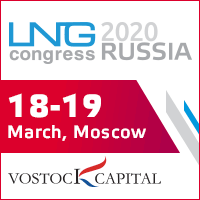The precariousness of the alternative Nabucco project undermines its feasibility and competitiveness

BUDAPEST, Hungary - Representatives of stakeholder nations and investors in the Nabucco project — the white-elephant gas pipeline seen as a strategically vital alternative to Gazprom’s pipelines in Europe, as it will circumvent Russia on its way to the European markets — gathered at a summit in the Hungarian capital at the end of January to find solutions to two of the most important and pressing problems facing the project, namely, the search for reliable sources of gas for the pipeline and securing enough funding to execute the project.
The nearly 8-bln-euro project, according to the brains behind the scheme, is expected to transport gas from the Central Asia’s Caspian Sea region, and possibly the Middle East, via Turkey to Austria in the EU, and further onto the continental gas markets. A pet project of the EU and United States, the pipeline is seen in Brussels and Washington as an essential step toward reducing the continent’s lopsided dependence on Russia’s gas.
This necessity was once again reiterated at the Nabucco Project Summit in Budapest in January by Czech Prime Minister Mirek Topolanek, who currently holds the rotating EU presidency, when he noted that the Czech EU presidency sees energy security as one of its top priorities. Addressing the summit, which was also attended by representatives of Hungary, Bulgaria, Azerbaijan, Georgia, Egypt, the European Commission and the European Investment Bank, Topolanek called on the EU member states to support the construction of a new corridor for gas supplies to Europe. “It is time that the Nabucco project became the Nabucco process. The construction of a new gas pipe will strengthen the independence, security and prosperity of the EU member states,” he said. “Nabucco may become a bridge connecting the past with the future, crossing geographic, political and religious boundaries. It is the demonstration of the possibilities of cooperation.”
However, the project is currently mired by two key problems that are traditionally associated with any gas pipelines business ventures, namely, the availability of easily accessible and highly reliable huge sources of gas to fill pipelines to projected capacities for a long time and the colossal amounts of initial capital commitments needed to kick-off such projects. At this moment, the Nabucco project has yet to solve these two problems, which cloud its already hazy feasibility prospects.
With regard to the sources, the stakeholder nations expect much of the gas to come from the Caspian region. But of the Caspian littoral states, namely Russia, Azerbaijan, Kazakhstan, Iran, Turkmenistan and Uzbekistan, only the Azeris have expressly shown interest in the project. All the Central Asian states have signed exclusive long-term contracts with Russia’s Gazprom, which exclude them from this project, while Russia, for obvious reasons, is not interested in a project designed to reduce its gas markets in Europe. This leaves only Iran as the only source of gas, but for reasons already given above, building a strategic energy pipeline to Europe on Iran’s gas will, according to experts, be tantamount to economic suicide and worst form of manifestation of geopolitical myopia by EU bureaucrats.
Also currently unresolved are problems relating to the exact topographical routes and countries’ territories, which the gas pipeline will eventually transverse during its construction. For instance, the Turkish part of the gas corridor is now in doubt following the Turkish political leadership’s decision in January 2009 to link its further participation in the project with its EU membership bid, Ankara’s long-awaited dream. “We shall not support the project if the EU does not unlock the part of the negotiation on EU membership,” Turkish Premier Recep Tayyip Erdogan said. “If we find ourselves in a situation, where the energy part of the negotiations is blocked, then we shall review our position on this project.”
Another political blow to the project came from the August war in the Caucasus last year. Specifically, the Georgian aggression against South Ossetia has raised questions on the safety of this strategic energy pipeline, forcing the stakeholders to broaden their searches for safer corridors, including through Armenia, a move that will make Yerevan a strategic part of this project. However, the existing fruitful, long-term strategic partnership pact between Moscow and Yerevan across a broad spectrum of areas will not allow Armenia to participate in the project. This is further buttressed by the participation of the Armenian president, Serzh Sargsyan, in the Moscow Gas Summit, the only foreign head of state, to attend the forum.
With the first batch of problems — the search for sources of abundance supplies of gas for the pipeline and the exact topography of the gas pipeline corridor presently unsolved, the second problem — securing adequate funding from both private and public sectors has become a hard nut to crack, an issue that is further compounded by the current global financial crisis. Speaking at the conference, the host, Hungarian Prime Minister Ferenc Gyurcsany, said these issues are being solved by stakeholder countries and potential gas suppliers. “We will do everything we can to make sure that stakeholder countries can come to an intergovernmental agreement by the middle of June. Following this, we will endeavor to set up preliminary agreements with gas supply countries.”
Gyurcsany added that he hopes the EU will eventually fund the project to the tune of 2bln.euros (about $2.6bln), with an initial 200-300mln euros needed to get the project off the ground. However, the summiteers’ enthusiasm over EU’s intended huge financial commitment was not shared by European Union’s Energy Commissioner Andris Piebalgs, who though pledged moral support for the project, diplomatically declined to pledge any direct EU funding for the project, at least, at this stage.
Reinhard Mitschek, head of the Nabucco consortium, and Philippe Maystadt, president of the European Investment Bank expected to foot some of the costs, are, however, optimistic that these problems will soon be solved. Specifically, Mitschek said he expects the engineering work and the marketing of Nabucco’s gas transport capacity to begin later this year. “On the basis of statements from political representatives and banks, we believe an intergovernmental agreement will be reached soon,” he said. Having said that, Mitschek, aware of the significance of securing reliable gas sources to the feasibility of the whole project, specifically noted that forging agreements with potential suppliers in gas-rich Central Asia and the Middle East is of paramount importance. “Financing will not be an issue. Therefore, we need to concentrate more on the sources of gas supplies.”
All things being equal, the Nabucco project will have to overcome a myriad of problems and challenges in order to see the light and to pose a tangible threat to Russia’s stronghold on the European gas market. Besides, even in the highly hypothetical case of solving all these problems positively, there is a visceral fear among the stakeholders that the Nabucco project will be made ‘largely redundant’ in the best case scenario and ‘still dead on delivery’ in the worst case scenario by Gazprom’s more reliable and powerful South Stream pipeline traversing the same geographical regions. For one, this project is already under development with a projected annual capacity of 30bcm of gas, which, if necessary, could be boosted by extra 15bcm to 45bcm.
This fear is further amplified by the fact that the Nabucco project, on the contrary, is still on the drawing table, requires up to 8bln.euros that have yet to be found for the construction, has no reliable gas sources, and in case of successful completion, will only have a projected maximum capacity of 30bcm per year. By all indications, the Kremlin has probably factored all factors into the politicized European gas equation and come to the conclusion that irrespective of the solutions to the European gas equation, the odds will always be in Gazprom’s favor. Thus, it now becomes absolutely clear, why Russia is very calm over the Nabucco project, as it does not see it as a real and sustainable long-term competitor to it on the European gas market. And, it might just be right.












 Web design,
Web design,